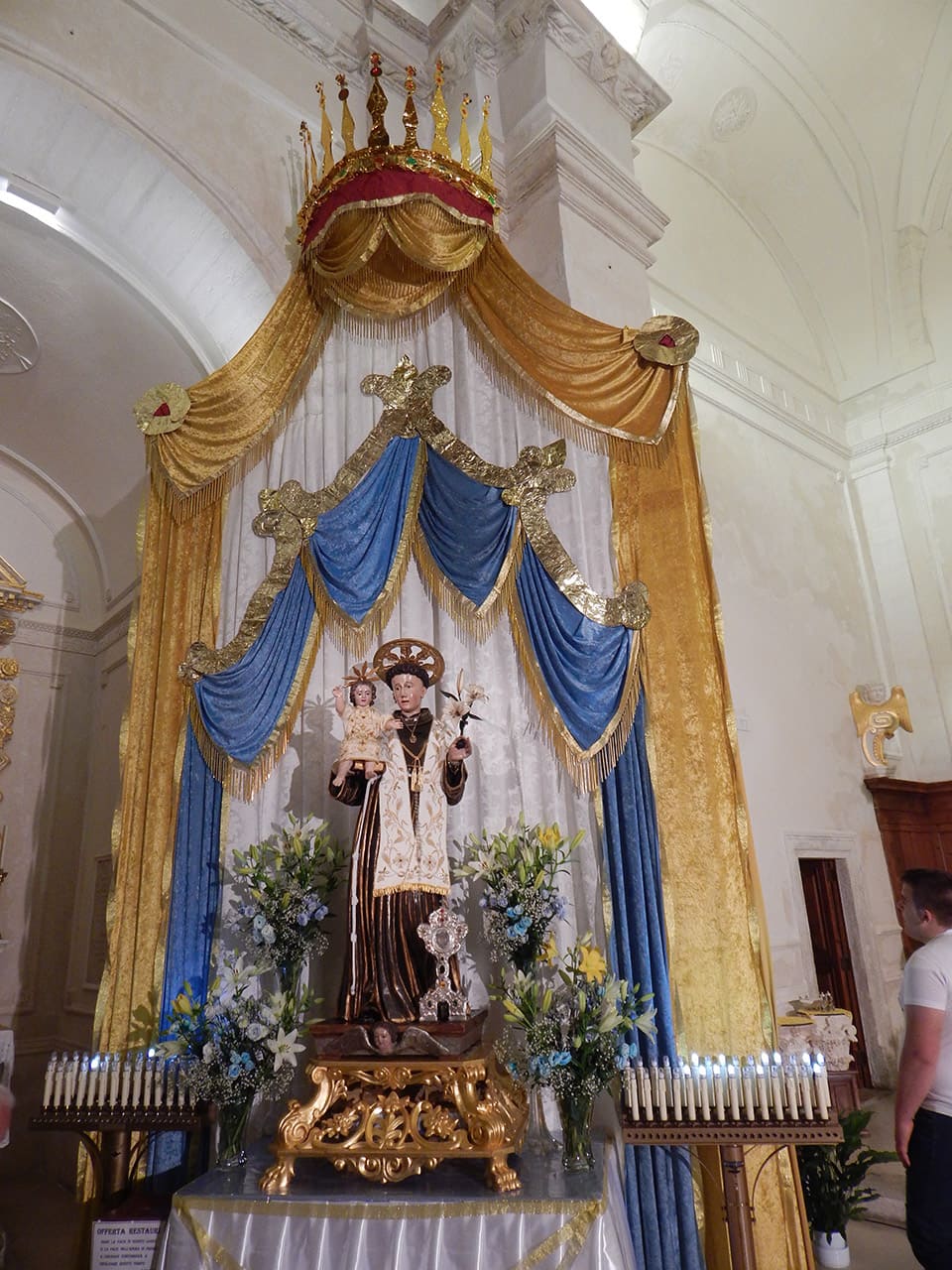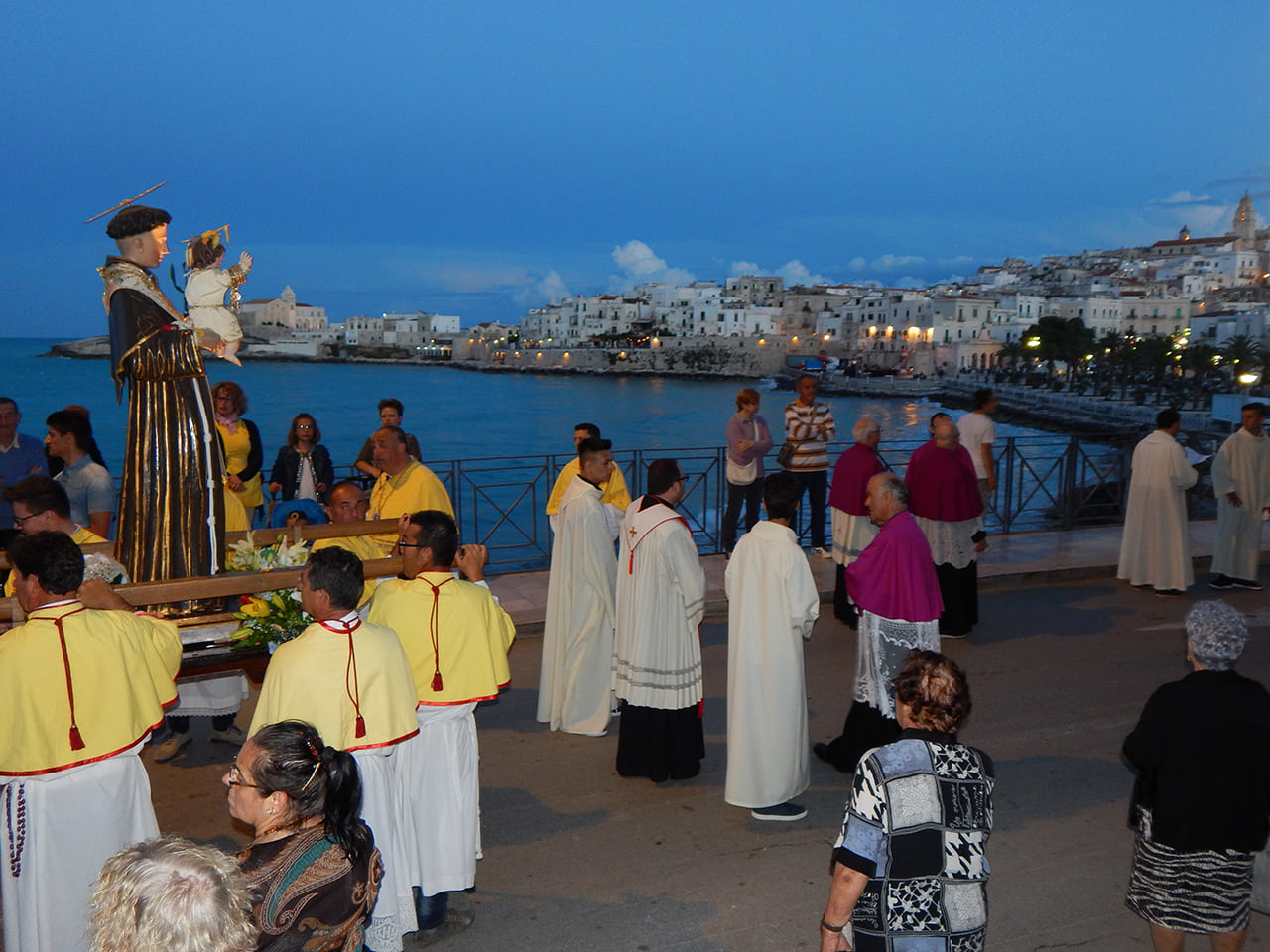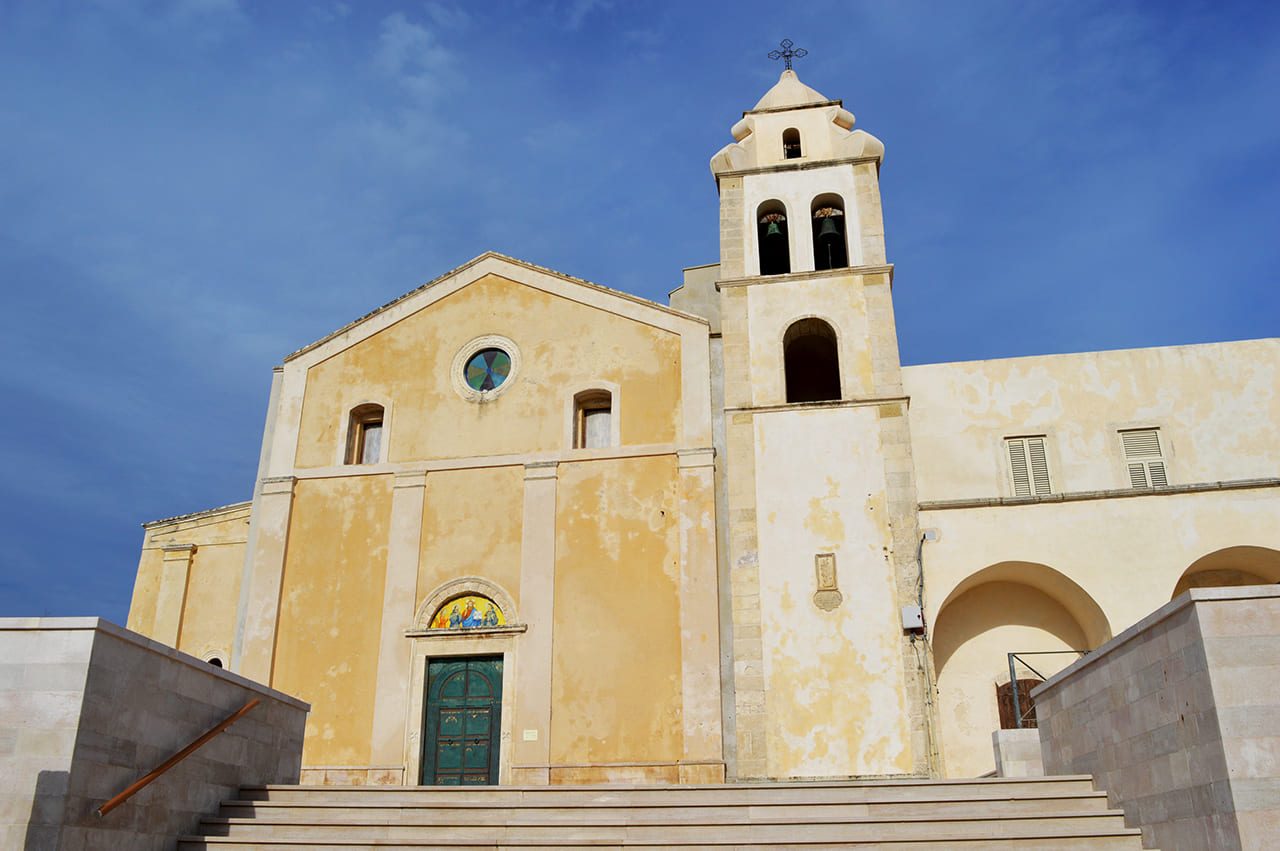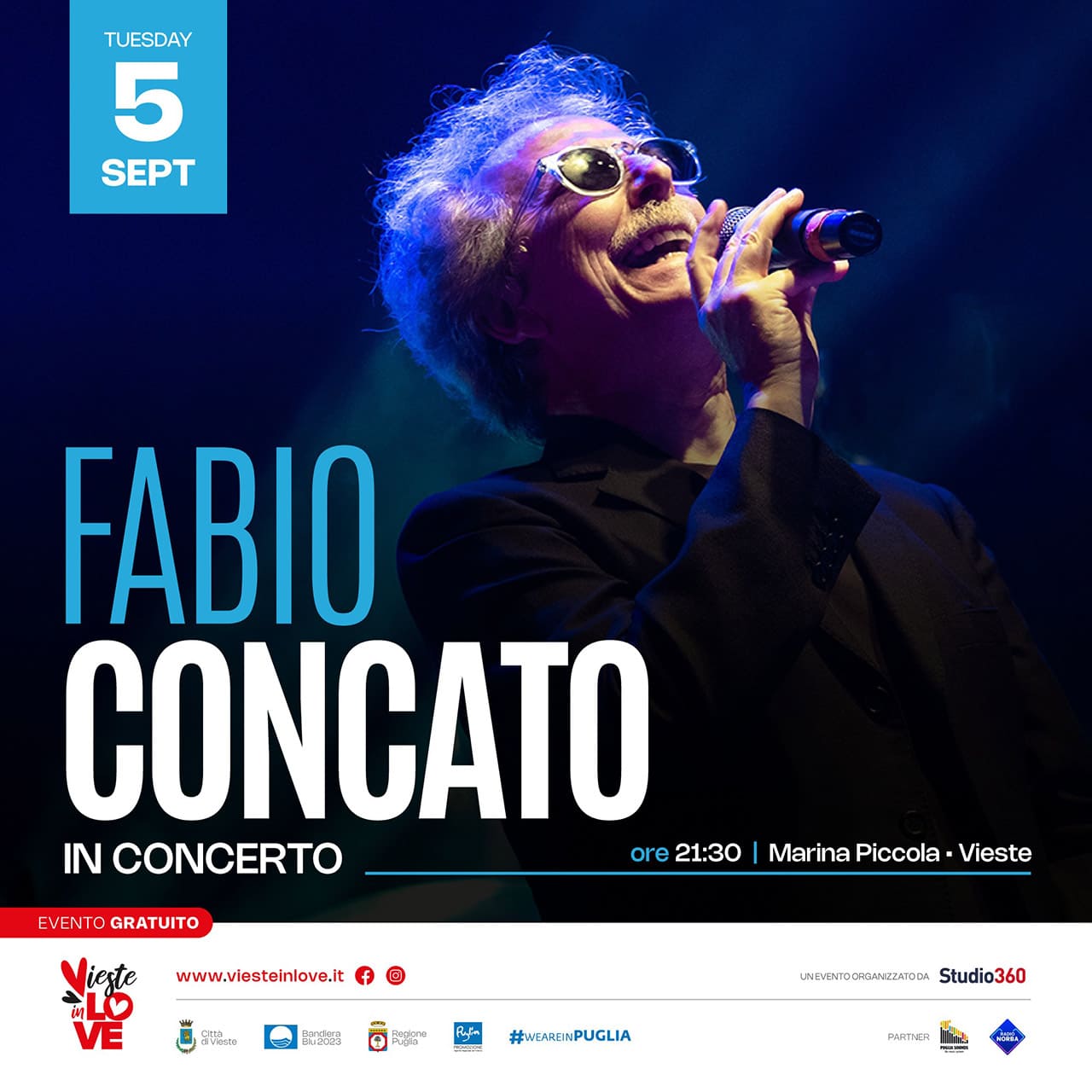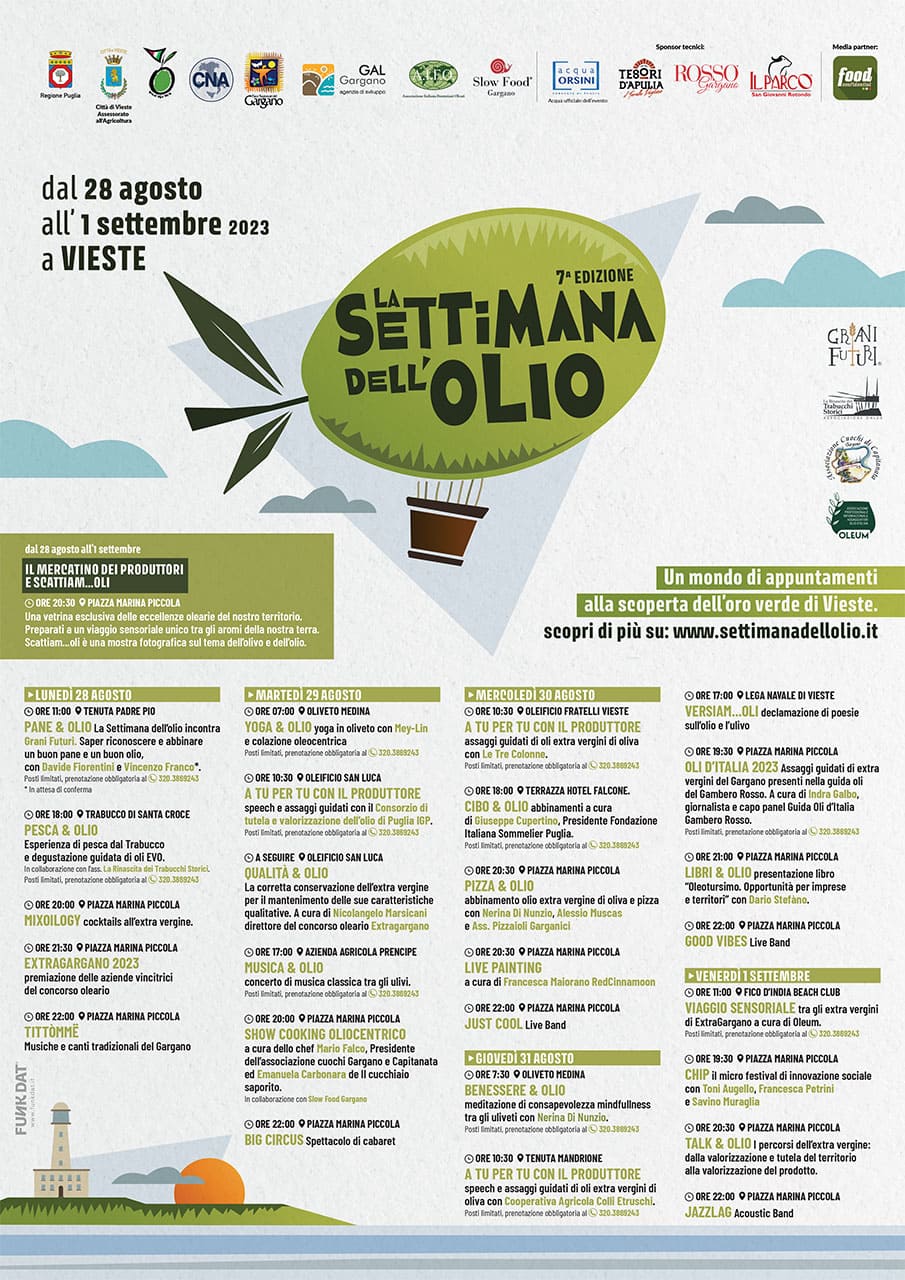Il complesso religioso fu fondato dalle Clarisse nel 1438 e consacrato a Santa Caterina D’Alessandria fino al saccheggio turco del 1480. Dopo un lungo periodo di abbandono e la successiva costruzione di un baluardo di difesa realizzato dal Re di Napoli Ferrante I, alla fine del XVI secolo il complesso passò ai Francescani intitolandolo a San Francesco. Il convento fu distrutto dal terremoto del 1646 e riedificato nelle forme attuali con l’aggiunta successiva dell’attuale campanile. Alla fine del Settecento, data la grande difficoltà di mantenere il convento, i Francescani lo cedettero agli Scolopi che vi rimasero fino al 1809. La chiesa possiede sette altari che rimandano alla vita e al fervore religioso dell’ordine francescano. Tra le opere contenute sono degne di nota: le statue di Sant’Antonio da Padova, di San Giuseppe e la tela settecentesca realizzata dal pittore spagnolo Castaneda da Valencia che troneggia dietro l’altare maggiore. Ogni 13 Giugno qui si riversa una folla di fedeli per la celebrazione della festa di Sant’Antonio da Padova che culmina in una solenne e suggestiva processione serale.
The religious complex was founded by the Poor Clares in 1438 and consecrated to Saint Catherine of Alexandria until the Turkish sack of 1480. At the end of the 16th century, after a long period of abandonment, the King of Naples Ferrante I built a bulward and the convent passed to the Franciscans and was named St. Francis. The convent was destroyed by the earthquake of 1646 and rebuilt with the addition of the current bell tower. At the end of the 18th century, because of the poverty of the friars, the convent passed by the Piarist who remained there until 1809. The church has seven altars that refer to the life and religious fervour of the Franciscan Order. Among the works contained are noteworthy: the statues of St. Anthony of Padua, St. Joseph and the eighteenthcentury canvas painted by the Spanish painter Castaneda of Valencia, which is enthroned behind the high altar. Every 13th of June a faithful crowd arrive here for the celebration of the feast of St. Anthony of Padua culminating in a solemn and evocative evening procession.
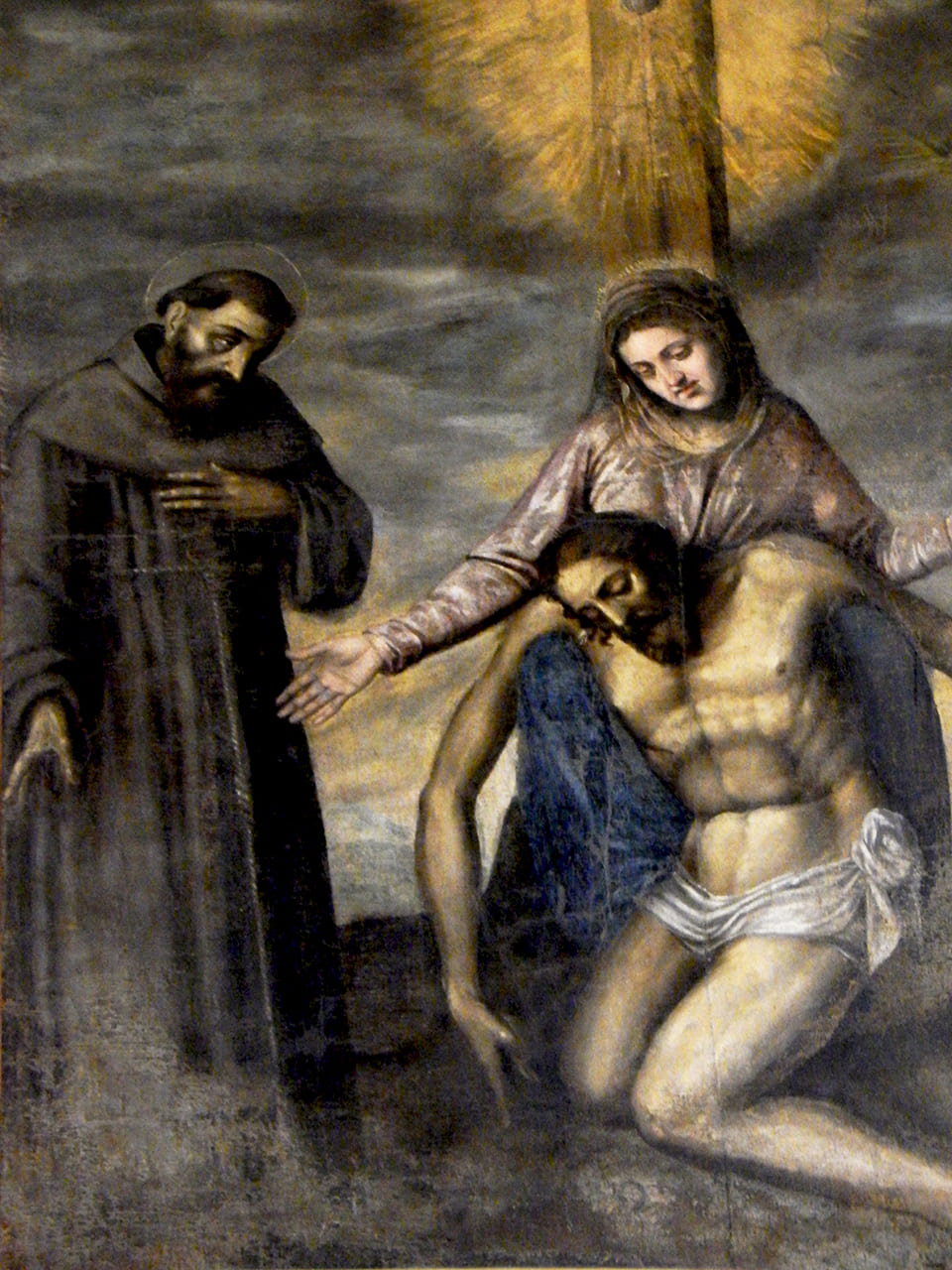
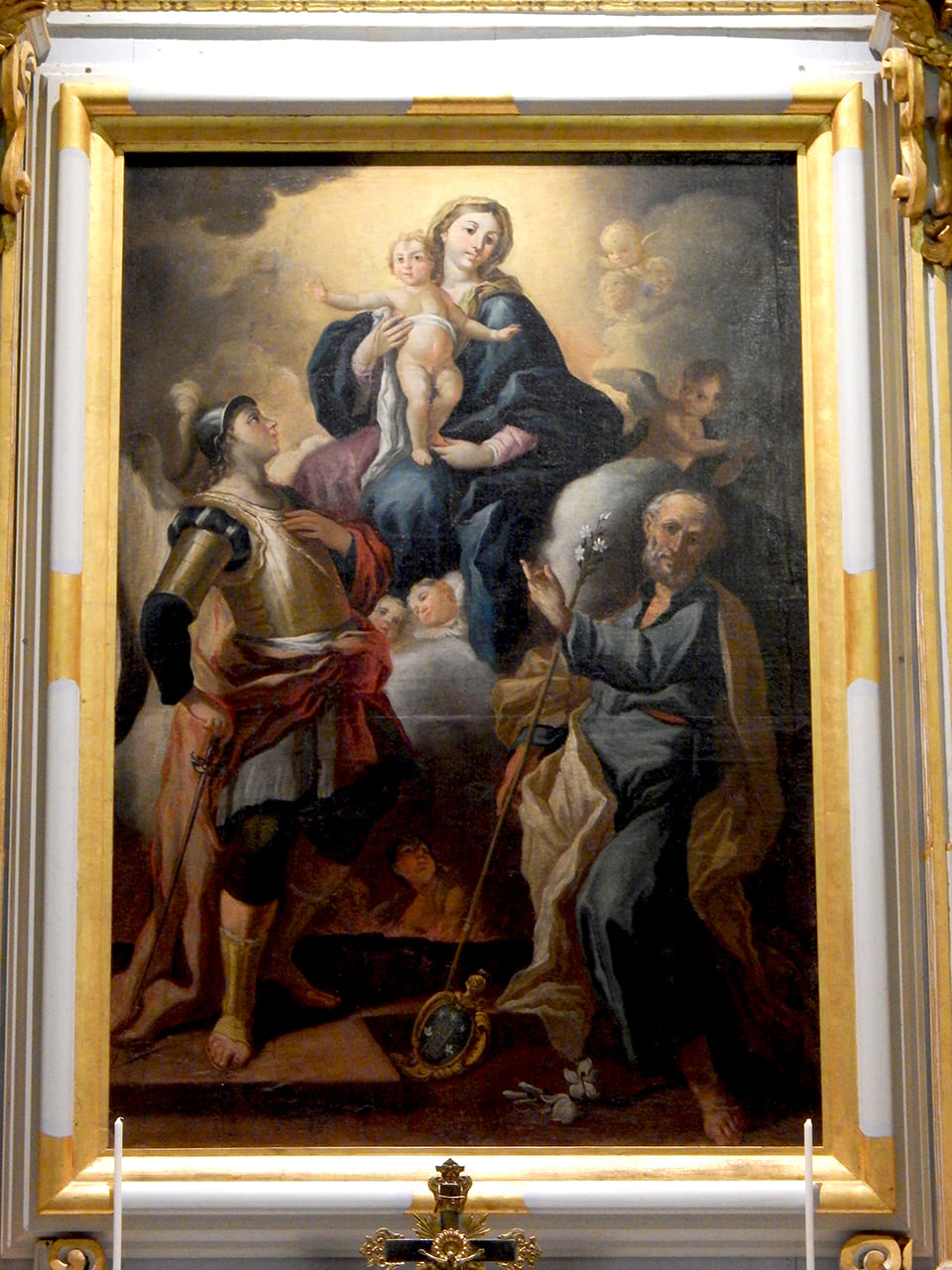
MULTIMEDIALE
L’interno della chiesa è caratterizzato dal sapiente uso del tufo locale che diventa, a seconda dell’uso, materiale edile oppure decorazione di altari e cappelle. La chiesa a navata unica svela tutto il suo candore con le decorazioni in pietra locale che adornano gli altari, incorniciano porte, finestre ele mura perimetrali coperti da un soffitto con capriate lignee intagliate. Notevole il rosone, riaperto durante i restauri, l’ambone e l’altare maggiore realizzati da Salvatore Palumbo uno degli ultimi scalpellini del Gargano. Da sinistra abbiamo: la cappella della Madonna di Lourdes con un altare in pietra decorato e un crocifisso in cartapesta del XVIII, di fronte si trova la Cappella della Porziuncola con un dipinto del XVIII con San Francesco e Santi; le cappelle mediane invece presentano edicole in legno dipinte con la pala della Madonna del Suffraggio, a sinistra, e l’Immacolata a destra entrambe di autori ignoti. Seguono due altari con le statue lignee di Sant’Antonio da Padova scolpita a Dubrovnik nel 1498 e di San Giuseppe in stile barocco napoletano. Sull’altare maggiore invece troneggia un’opera di grande rilievo artistico: La Deposizione del Cristo tra San Francesco e Santa Caterina di Castaneda da Valencia. L’opera, danneggiata nel passato, oggi si presenta priva della figura della santa sul lato destro. Nella chiesa inoltre ci sono diverse epigrafi funebri e delle botole sul pavimento, quest’ultime, usate per la sepoltura dei frati.
The interior of the church is characterized by the wise use of local tuff which becomes, depending on the use, building material or decoration. The church with a single nave reveals all its candour with the local stone decorations that adorn the altars, frame doors, windows and perimeter walls covered by a ceiling with carved wooden trusses. Remarkable is the rose window on the main facade, reopened during the restoration, the ambo and the high altar made by Salvatore Palumbo one of the last stonemasons of the Gargano. From the left we have: the Chapel of Our Lady of Lourdes with a decorated stone altar and a papier-mâché crucifix of the 18th century, opposite is the Chapel of the Porziuncola with a painting of the 18th century with St. Francis and Saints; the middle chapels instead have wooden aedicules painted with the altarpieces of the Madonna del Suffraggio, on the left, and the Immaculate on the right, both by unknown authors. Followed by two altars with wooden statues of St. Anthony of Padua carved in Dubrovnik in 1498 and St. Joseph in Neapolitan Baroque style. On the main altar instead stands a work of great artistic importance: The Deposition of Christ between St. Francis and St. Catherine painted by Castaneda of Valencia. The canvas, damaged in the past, is now devoid of the figure of the saint on the right side. In the church there are also several funeral epigraphs and hatches on the floor, the latter used for the burial of the friars.
Die Kirche hat ein einziges Kirchenschiff, das durch das Weiß des lokalen Tuffsteins gekennzeichnet ist, der für die Dekoration von Altären, Türen, Fenstern und Wänden an der Decke von Holzbindern verwendet wird. Markierbar sind das Rosettenfenster sowie der Ambo und der Hochaltar von Salvatore Palumbo. Von links befindet sich die Kapelle Madonna von Lourdes mit einem Steinaltar und einem Pappmaché-Kruzifix aus dem 18. Jahrhundert, davor die Kapelle von Porziuncola und ein Gemälde aus dem 18. Jahrhundert mit dem Heiligen Francesco und den Heiligen. Die Kapellen in der Mitte haben zwei mit Holz bemalte Aedikula mit Altarbildern, links „Madonna del Suffragio“ und rechts „Immacolata“, beide von anonymen Künstlern. Folgen Sie zwei Altären mit Holzstatuen des Heiligen Antonius von Padua, die 1498 in Dubrovnik hergestellt wurden, und des Heiligen Josef im barocken neapolitanischen Stil. Auf dem Hauptaltar befindet sich ein wichtiges Kunstwerk: „Absetzung Christi zwischen dem Heiligen Francesco und der Heiligen Caterina von Castaneda aus Valencia. Das Kunstwerk wurde in der Vergangenheit beschädigt, sodass es jetzt Santa Caterina vermisst. In der Kirche gibt es auch Inschriften und einige Luken, die in der Vergangenheit als Gräber für die Brüder verwendet wurden.
